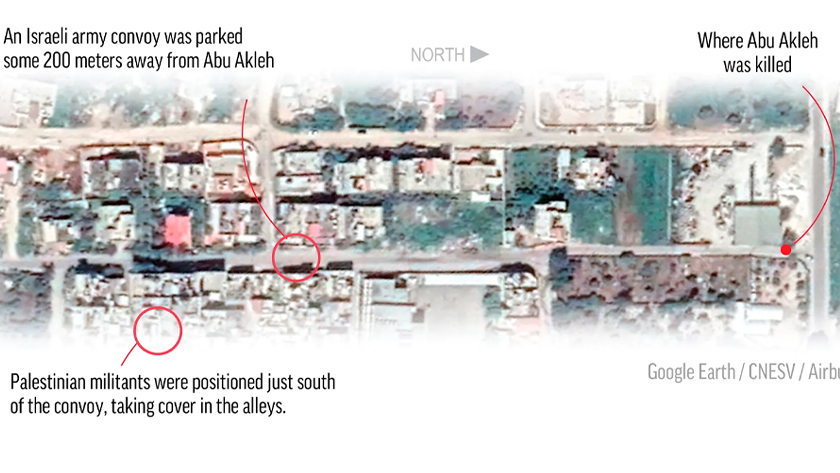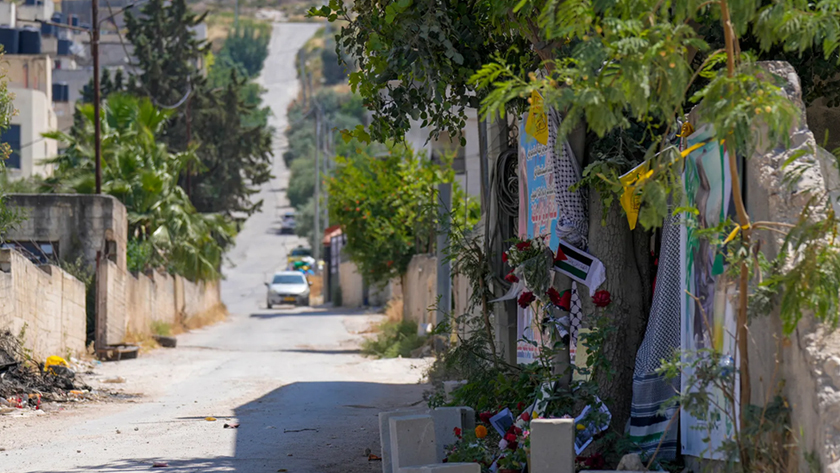Iran Press/ Middle East: Almost two weeks after the death of the veteran Palestinian-American reporter for Al Jazeera, a reconstruction by The Associated Press lends support to assertions from both Palestinian authorities and Abu Akleh’s colleagues that the bullet that cut her down came from an Israeli gun.
Multiple videos and photos taken on the morning of May 11 show an Israeli convoy parked just up a narrow road from Abu Akleh, with a clear line of sight. They show the reporters and other bystanders in real time taking cover from bullets fired from the direction of the convoy.
The only confirmed presence of Palestinian resistance was on the other side of the convoy, some 300 meters (yards) away, mostly separated from Abu Akleh by buildings and walls. The Israeli regime claims at least one resistance fighter was between the convoy and the journalists, but it has not provided any evidence or indicated the shooter’s location. Palestinian witnesses say there were no Palestinian fighters in the area and no gunfire until the barrage that struck Abu Akleh and wounded another reporter.
Those witnesses say they have no doubt that it was Israeli soldiers who killed Abu Akleh, now celebrated as a martyr to both journalism and the Palestinian cause. The Israeli military says she was killed in a complex shootout between soldiers and resistance fighters, and that only a full investigation — including forensic analysis of the bullet — could prove who fired the fatal shot.
The Palestinians have refused to hand over the bullet or cooperate with Israel in any way on the investigation, but say they will share the results of their own probe with any other party.
AP reporters visited the location where Abu Akleh was killed on the edge of the Jenin refugee camp in the northern West Bank, as well as the scene of a nearby battle with the Israeli regime's forces captured on a video shared by the regime.
Interviews with five Palestinian eyewitnesses corroborate an analysis by the Dutch-based Bellingcat research group indicating Israeli forces were closer to Abu Akleh and had a better line of sight. The group, which specializes in geolocating events in war zones by analyzing photos and video shared online, pinpointed the location of the convoy just up a narrow road from where Abu Akleh was killed.
Related News:
UN experts: Killing of Abu Akleh may constitute a war crime

The road and the convoy
Reporters who were with Abu Akleh say that when they arrived at the scene it was quiet, with no clashes or resistance fighters in the immediate area. Ali Samoudi, an Al Jazeera producer from Jenin, said he called people inside the camp to get an idea of what was happening.
Then they proceeded to a long, narrow road sloping up from an open area to a cluster of concrete buildings where an Israeli army convoy was parked some 200 meters away. Each reporter was wearing a helmet and a blue vest labeled “PRESS” in large lettering.

“We stepped out into the open so they could see us,” Samoudi told the AP. “They didn’t indicate that we should leave, so we went slowly, walking forward about 20 meters.”
Shatha Hanaysheh, a local photographer, said they remained there for 5 to 10 minutes, talking and even laughing in full view of the soldiers. A video that appears to capture the first shots supports her account.
Samoudi said the soldiers fired a warning shot, causing him to duck and run backwards. The second shot hit him in the back. Abu Akleh was shot in the head and appears to have died instantly, Hanaysheh sheltered on the other side of a tree next to a wall. Tree bark on the side facing the army appears to have been chipped away by gunfire or shrapnel.
Two days after Abu Akleh was killed, the Israeli regime's forces returned to Jenin to carry out another raid.
Hanaysheh said even more journalists than usual came out to cover it — and that she was among them.
“Any journalist anywhere knows that they can be killed, but if we don’t do this work then no one else will,” she said. “We know the occupation doesn’t want what happens here to get out.”
214
Read More:
Europe, US made Human Rights Declaration inefficient: Statement
Students commemorate Al-Jazeera's Abu Akleh in Tehran
Mojtaba Darabi

